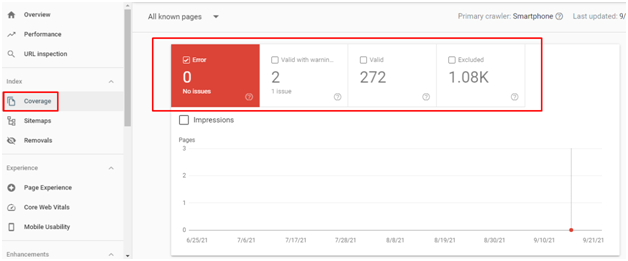Every website needs SEO to give it the boost it needs to take off. And for those who aren’t familiar with how SEO works, this blog post will provide a list of major ranking factors and what you need to keep your site as optimized as possible so that your website can be successful in search engines. As well as SEO Website Audit Checklist also provided to know what you should do if you’re still unsure about how to optimize your site for optimal results.
Why Perform SEO Website Audit?
An SEO audit is a process of analyzing a website’s overall performance, in various aspects such as website design, content, technical, backlink, analytics, etc. It helps understand the organic search performance of a website in a detailed manner and its competitor sites too.
This overall process helps to create and implement a custom strategy to ensure measurable results effectively. It offers exceptional opportunities for the websites to grow online, enhance efficiency and visibility.
SEO Website Audit Checklist
Before you choose your keywords, optimize your on-page content, etc. before actually optimizing your site, it’s good to know what you’re working with. So that’s why I provide you with an SEO website audit checklist. If you use this SEO audit checklist every week while optimizing your site, you’re bound to see more success in search engines.
1. Check To See If Your Site Is Indexed
Check whether the search engines like Google, Bing, Yahoo, etc., have indexed your website exactly as it is. For example: Search for “site:example.com” – Use only the URL of your domain without HTTP or HTTPS or WWW.
If your website is not showing up on search results, you may have issues preventing bots from crawling your website. To resolve, create a property in Google Search Console, submit your website sitemap, and request for indexing to make your website visible in search results.
2. Indexing & Crawling Issues
Indexing and crawling issues are aroused when search engines try to index your website pages. Because of technical errors, search engines may fail to index all of your website pages and some are not even crawled.
- Check that the site has XML Sitemap with all the page URLs and was submitted in Search Console, to find the indexing issues.
- Check whether the pages have a “No index” tag within the <head> tag, if so remove the tag of key pages and request for indexing in Search Console.
Once you fix and validate the issues, Search Console will show the status of each page in Coverage issues or the URL inspection tool.

3. Google Analytics Setup
Check the Google Analytics account has been setup properly before analyzing the website data. Cross-check with the code found inanalytics and code in the website’s header tag if it is embedded directly. You can also integrate analytics through 3rd party plugins like Monster Insights, Analytify, etc.
- Can track every user data from the beginning and can retarget based on the demographics and user interest.
- Can check real-time data of the website as to who, from where, and how an individual visits your website.
- Can check organic traffic throughAcquisition >> All Traffic >> Channels/Sources to find the hourly, or daily, or weekly, or monthly data since the beginning date to analyze the lagging and best-performing areas.
- Can observe the behavior of your users for the website content, and landing pages too, to improvise the website content.
- Can create events and goals for the key actions like Request a quote or Form filling or Add to Cart to track the particular objective data.

4. Website Page Speed
Website page speed is one of the major ranking factors as well and the faster the page, the more efficient it is and provides a much better on-page user experience.
Slow page speed always harms website performance and user experience, which results in low traffic. It can also affect rankings directly by reducing dwell time and increasing bounce rate. Google Page Speed Insights and GTmetrix are the best tools to check your website page loading time, speed, and reasons for drawbacks as well.
5. On-page SEO Score
The On-page SEO Score is a measurement of how well your site’s user-facing and technical elements contribute to search engine optimization and, as a result, improved rankings and organic traffic.
On-page SEO refers to several factors within a website’s HTML code. For best practice, you should audit each of the following tags:
- Meta Title: It helps search engines to understand to rank the page for the targeted/relevant keywords and improves page visibility on SERPs.
- Meta Description: It helps enhance the click-through rate of your organic search results, as it results in more traffic for the landing page.
- Header Tags: H1 to H6 tags helps search engines to quickly crawly through a page and determine how to rank a website’s page content.
- Image Alt Tag & Attribute:Provides context to what an image is displaying, notifying search engine crawlers and allowing them to index an image correctly.
6. Competitor Analysis
It is nothing but analyzing the strengths and weaknesses of the potential competitors, mostly assessing the comparative strengths to create strategies to enhance site performance.
There are many tools like Ahrefs, SEMrush, SpyFu, etc., for competitor analysis to find out the top-ranking keywords, traffic-generating landing pages, best-performing blogs, backlink count, and quality. All this data can explain how the user interacts and who can influence your niche.
7. Keyword Performance
From keyword research to rank tracking, everything is related to keywords is worth more than other aspects in SEO. Keyword plays a crucial role in targeting and engaging users and rank websites in search engine results.
The keyword performance is measured through user interaction, traffic, CTR, bounce rate, geographic location, quality score, and impressions. You can analyze all these data through SERPs, Google Analytics, and Google Search Console data.
Whether it is a primarily focused keyword or long-tail keyword, must suggest using which has enough search volume and competition to get estimated traffic for your website.
8. Featured Snippets
Featured snippets are short excerpts from a webpage that appears in SERPs to quickly respond to a user’s query. Google automatically pulls featured snippet content from pages that have been indexed.
A featured snippet is essential since it adds another SERP feature that you can control. Usually found at the very top of the results page, give websites more visibility to searchers and can help increase brand recognition.
The most common and preferred forms are sitelinks/rich snippets, text, video, definitions, lists, steps, tables and many more.
9. Broken Links & Redirections
The broken link or a 404 Page Not Found is a web page that cannot be accessed or found by the user due to page removal or slug modification or technical errors. These are not only harmful to user experience but effects website performance in search engines.
- If the page is accidentally removed, make it real immediately.
- If the slug is modified, make 301 permanent redirection, which passes full link equity to the redirected page.
Be sure to remove the broken link and old slug from the website and replace them with the redirected URL.

10. Duplicate Pages
Duplicate pages are website pages that have content that appears in many places on the Internet. This duplicate page content confuses Google, forcing it to choose which of the identical pages to rank first in the search results.
It results in rank drops and traffic losses unless it is modified with unique content or redirected to the original page.
11. Orphan Pages
Orphan pages are those on your website, aren’t linked to or from any other page or section. This means that without the direct URL, a user is unable to access the page. Even if they have exceptional content, seldom rank well in organic search results.
If there is important information or keyword-relevant content, make sure to add them to the menu or use them as hyperlinks for anchor texts in other internal pages.
12. Inbound & Outbound Links
Inbound links, also known as backlinks, are links to your website that come from other websites or a different domain name. These links have the greatest impact since they act as votes of credibility, trustworthiness, and authority that help in ranking; however, these inbound links must be natural and come from high-quality, relevant sites.
Outbound links, also known as external links, are links on your website that lead to websites with a different domain name. They may boost organic traffic, develop trust, and even help businesses connect. For blogging, these links are more crucial.
13. Social Presence
The term “social media SEO” refers to how social media activities can increase organic traffic to your website through search engines. Although the links you share across social media platforms may not directly help your SEO ranking, they do improve brand awareness.
So be sure to create and maintain regular activity on social media networks through social media marketing!

14. Content Checklist
- Design good content to attract more users as well search engines
- Create page contents based on search engine guidelines
- Use strong titles and H1 tags
- Be specific to keyword usage, must not be more than enough
- Maintain internal crawling structure between all pages (Internal linking from Homepage to services/blog page, service page to blog page, blog page to service page, etc)
- Generate keyword-rich content for the keyword targeted pages
- Do regular blogging on user-intended topics
15. Design Checklist
- Must have clean site structure for easy navigation
- The website design must align with your branding
- Use high-quality images
- Choose good-looking fonts style and colors
- The site must be compatible with all devices like mobiles, tablets, laptops, and desktops.
Advantages of Performing SEO Website Audit
SEO Audit is done to find out the problems that is existing in the website and fix them. The main aim of an SEO audit is to make a website perform well in search engines. This process improves your website’s performance and helps you obtain an edge over your competitors.
To assess SEO performance, must perform a comprehensive check on site structure, code quality, keyword optimization, content optimization, metadata optimization, and social media optimization.
- Improvers overall website performance.
- It helps to understand the website from the user’s perspective.
- Identifies where users get stuck at any point on the website. It helps to remove obstacles from the path of a visitor.
- It provides insights on how users interact with your website and what can be done to make it better.
- Help find out which keywords are performing well and which are not.
- It also identifies which pages are not performing well and need better optimization, which keywords are missing from it, and what new ones need to be added.
- Helps identify competition, strengths, and weaknesses.
- Brings new focus to your SEO strategy.
Whether to assess a brand-new website or an existing website with poor optimization, Devgraphix team is here to help in designing a custom SEO strategy. Our SEO experts are specialized to offers the best in class services to help you properly implement the result-driven strategy. Get a quote for a free analysis!











